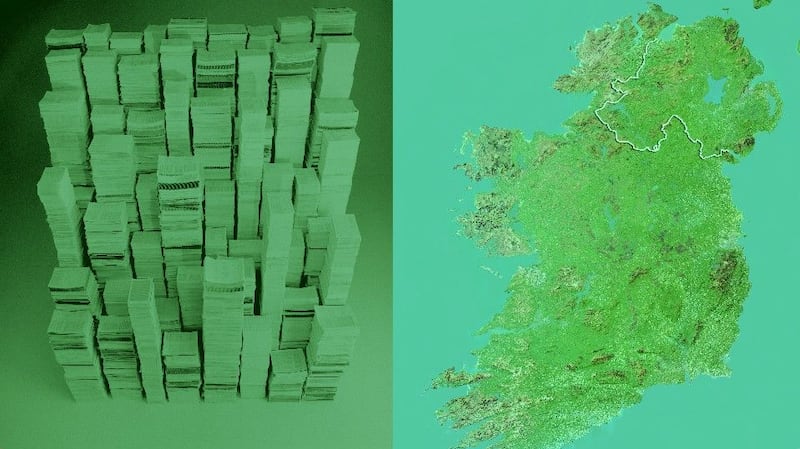How high is Liberty Hall? How many people in the world are talking on their mobile phones right now? How fast does human hair grow? How many A4 sheets of paper would cover Ireland?
Some of these questions seem impossible to answer but, using basic knowledge and simple logic, we can make a good guess at the answers. For example, Liberty Hall has about 16 floors. With four metres per floor we get a height of 64 metres, close enough to the actual height. Problems of this nature are known as Fermi problems.
Enrico Fermi (1901-1954) was the Italian physicist who built the world's first nuclear reactor. He was awarded the 1938 Nobel Prize in Physics for his work on radioactivity. During the Trinity atomic test, he estimated the strength of the blast by dropping scraps of paper and watching how far they moved. His estimate of 10 kilotons was close enough to the true value of 20 kilotons.

Fermi believed that anyone with a reasonable arsenal of basic facts could use them to estimate a wide range of interesting quantities. In many situations an order-of-magnitude estimate – accurate to within a factor of 10 – is sufficient for practical purposes. His approach can provide an approximate value for unknown quantities.
Rough estimates
One of Fermi’s classic questions was “How many piano tuners are there in Chicago?” While this may appear hopelessly abstruse, an estimate can be based on reasonable assumptions. The population of Chicago (metro area) is about 10 million. The number of homes, the percentage of these with pianos, and the average time between tunings are unknown, but rough estimates should not pose difficulties. The total number of tunings per year follows and – if the workload of a single tuner is estimated – the number of tuners required to keep harmony in Chicago can be gauged.
The technique is to begin with what is known (population, working hours, etc) and estimate what is not known (percentage of houses with pianos, frequency of tuning, etc). We can round the calculations but must not make arbitrary assumptions or pull figures out of the air.
The key idea is to approximate the arithmetic, not the logic. The answer should come out at about 100 tuners. This is about right; certainly 10 would be spuriously small and 1,000 curiously large.
Car imports
The reasoning (logic, not numbers) leading to an estimate of piano tuners in Chicago will serve equally well to estimate the number of public libraries in Ireland, car imports per annum, the number of laundries or the quantity of milk consumed per year. None of the figures will be precise, but all should be useful.
Rough estimation is a vital aspect of education in science and engineering. Calculators can give a precise answer, but mishaps abound and students must be skilled in recognising egregious errors: if the height of a building is 5km or the speed of an aeroplane 5m/s, something is gravely wrong. Back-of-the envelope estimates can ring alarm bells, averting major blunders. There are several university courses on estimation, for example "The art of approximation in science and engineering" at MIT.
With the above approach, see what you can do with the following questions: How much water do you drink in a year? What is the cost of having all the windows in Cork washed? How many footballs would fill the Aviva Stadium or golf-balls fit in a VW Golf?
Peter Lynch is emeritus professor at the school of mathematics & statistics, University College Dublin. He blogs at thatsmaths.com.










